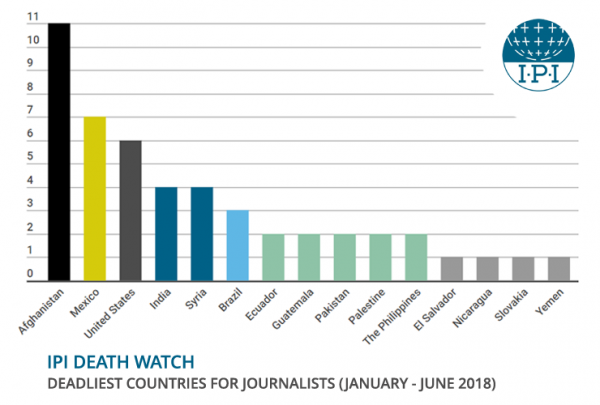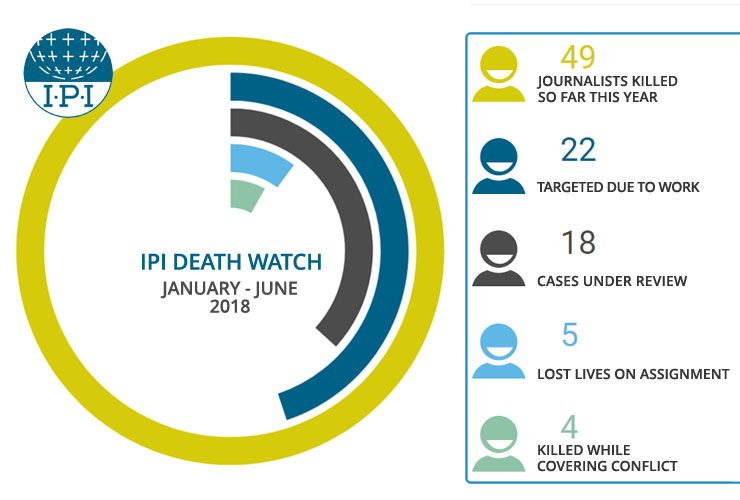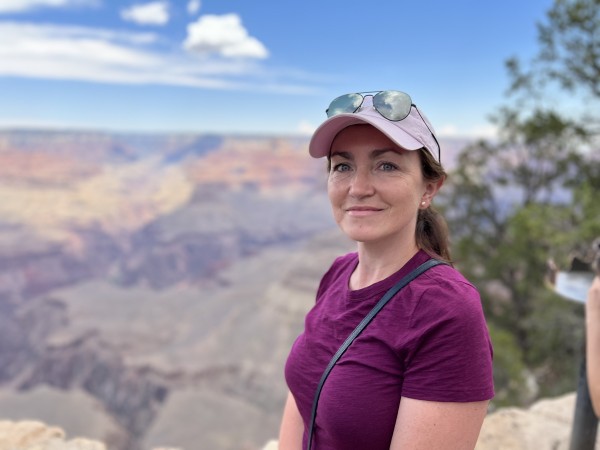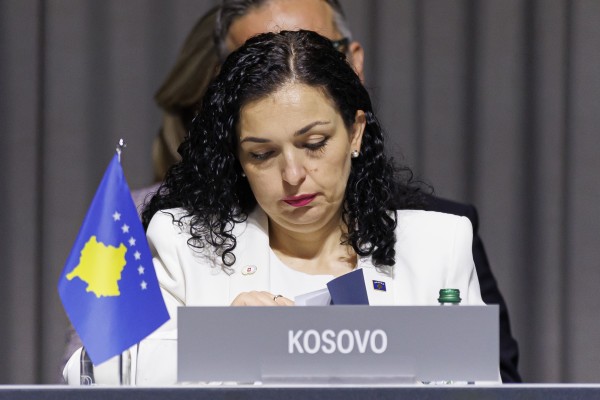As many as 49 journalists were killed around the world in the first six months of 2018, according to the International Press Institute (IPI)’s Death Watch.
IPI, a global network of editors, media executives and leading journalists for media freedom, has been compiling annual data on the killings of journalists since 1997, as part of its press freedom and safety of journalist programmes.
Twenty-two journalists – including 11 in Afghanistan and two in Palestine – have died in targeted killings this year, frequently in retaliation for their work on exposing corruption or the activities of crime syndicates. An additional 18 killings on IPI’s Death Watch are still under review to confirm links to journalistic activity, although circumstantial evidence in these cases points to targeted killings.
Four journalists were killed while covering conflicts or civil unrest, and another five died while on assignment. Of the 49 journalists killed, four were women.
Analysis of the data collected in the first six months shows that in many cases of targeted killings of journalists, investigations are slow, and the perpetrators have not been brought to justice.
“The impunity with which journalists have been murdered and the slow pace of investigations raise the question whether the deaths of journalists are probed thoroughly and urgently as they should be to protect press freedom”, IPI Head of Advocacy Ravi R. Prasad said.
On February 22 this year, police found the bodies of Ján Kuciak, a reporter with the news website Aktuality.sk, and his girlfriend at his home in Slovakia. Kuciak had been investigating corruption in government; his reporting exposing links between an Italian crime mafia and some members of the Slovak government was published after his death. The killing led to the resignation of Slovak Prime Minister Robert Fico. Slovak authorities are still continuing to investigate the case.
Similarly, in India, investigations are pending in the murders of four journalists in different parts of the country. These journalists, according to their media organizations, were engaged in investigating cases of corruption. In the case of Syed Shujaat Bukhari, editor-in-chief of Rising Kashmir, who was killed on June 14 outside his office, suspects have been identified but not yet brought to justice.
Journalist killings in India, Brazil, Guatemala, The Philippines, Afghanistan, El Salvador and Pakistan also await further investigation.
Killing fields
The deadliest country in 2018 so far is Afghanistan, where nine journalists were killed when a suicide bomber detonated amidst them on April 30 in Kabul while they were covering another suicide bomb attack. Two others were shot dead while on their way to work in other parts of the country.

Elsewhere, at least seven journalists have been killed in Mexico since the beginning of this year, making the country the second most dangerous in the world for the press. All those journalists appear to have been targeted for their work. Last week, IPI called on Mexico’s president and new president-elect to ensure journalist safety after the latest murder of journalist José Guadalupe Chan Dzib at the end of June.
India and the United States rank third in the list with four journalists killed in each country. In India, four journalists were reportedly killed in separate cases for investigating corruption, whereas in the U.S., four journalists and a staff member of Maryland’s Capital Gazette were shot dead by a gunman on June 29.
Last year, 82 journalists lost their lives, marking the first time in years that the number of annual deaths fell below 100.



